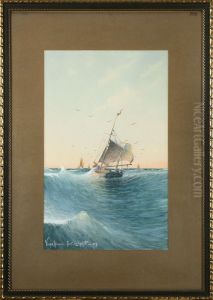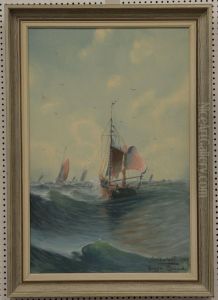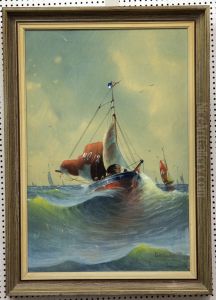Carl Ludwig Libay Paintings
Carl Ludwig Libay was an Austrian painter, draughtsman, and lithographer known for his landscapes, portraits, and genre scenes. Born on February 27, 1806, in Troppau, Austrian Silesia (now Opava in the Czech Republic), Libay was active during the 19th century, a period that saw significant transitions in the art world, with movements such as Romanticism, Realism, and the beginnings of Impressionism.
Libay's initial training took place in his hometown, where he developed a strong foundation in drawing and painting. He later moved to Vienna to further his studies and became associated with the Viennese art scene. His work was influenced by the Biedermeier style, which was prevalent in the German-speaking countries of Europe during the period between the Congress of Vienna in 1815 and the revolutions of 1848. The Biedermeier style was characterized by a focus on simplicity, elegance, and a sense of bourgeois domesticity, all of which can be seen in Libay's oeuvre.
Throughout his career, Libay exhibited a keen interest in capturing the essence of his subjects, whether it was the serene beauty of a natural landscape, the character of an individual in a portrait, or the narrative elements of daily life in his genre paintings. His work was well-received, and he gained recognition for his ability to render scenes with a high degree of detail and atmospheric effect.
Despite his success, Carl Ludwig Libay is not as widely known as some of his contemporaries. This could be due to a variety of factors, including the regional nature of his work and the overshadowing prominence of other artists during a century rich with artistic innovation. Nevertheless, Libay's contributions to Austrian art provide a valuable glimpse into the visual culture of his time.
Carl Ludwig Libay passed away on May 23, 1882, in Vienna. His legacy is preserved through his artworks, which continue to be of interest to collectors and historians studying the Biedermeier period and 19th-century Austrian art.



